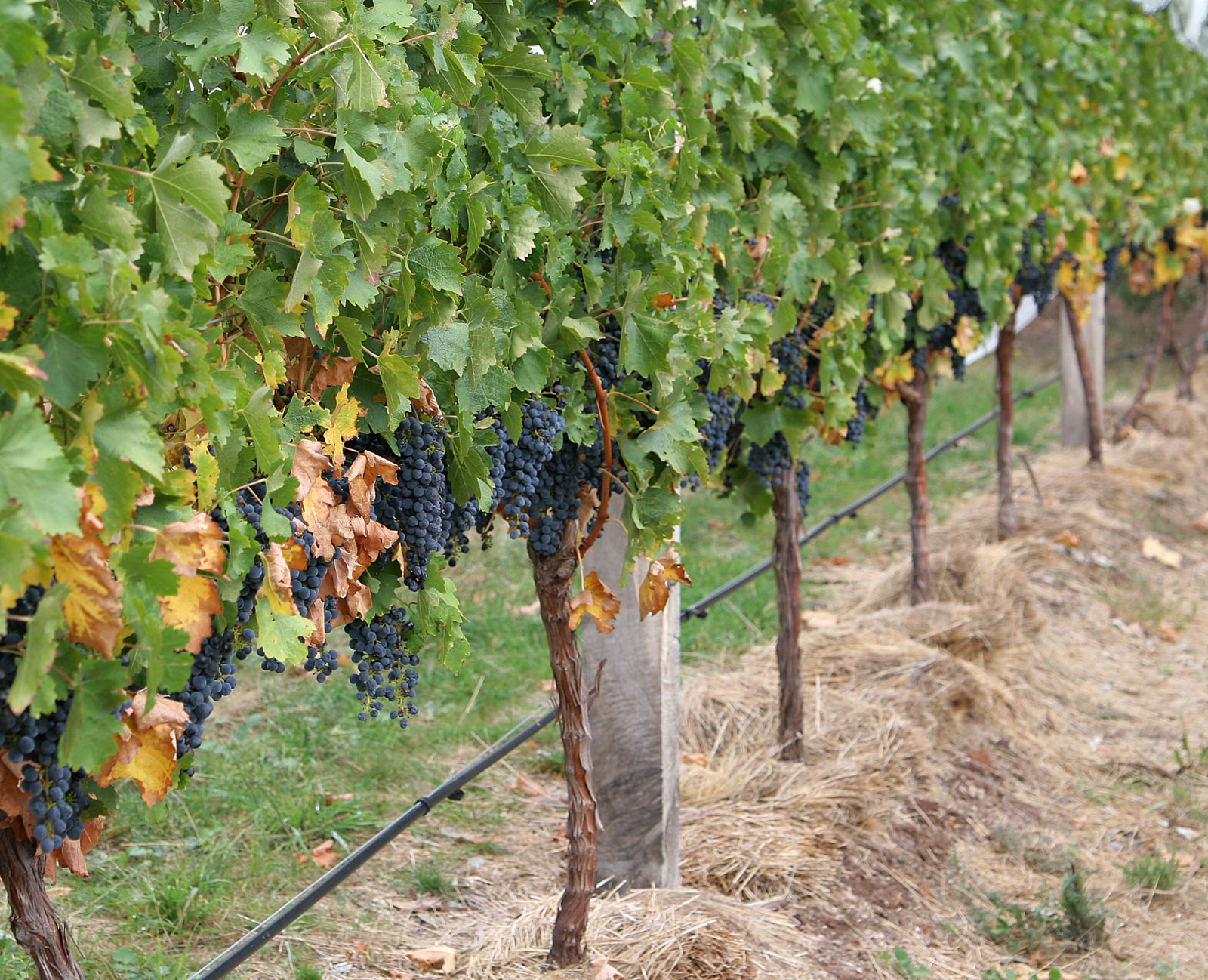|
Free Amino Nitrogen
In brewing and winemaking, free amino nitrogen (FAN) is a measure of the concentration of individual amino acids and small peptides (one to three units) which can be utilized by beer and wine yeast for cell growth and proliferation. Together with ammonia, FAN makes up the measurement of yeast assimilable nitrogen that can be measured prior to the start of fermentation. The exact components of FAN will vary from the composition of the wort or grape must. In wine, all 21 amino acids can be found in trace amounts with arginine, proline and glutamine being the most abundant. However, as ''Saccharomyces cerevisiae'', the primary yeast for both beer and wine, can not utilize proline in the anaerobic conditions of ethanol fermentation it is not included in FAN (and subsequently YAN) calculations. In winemaking The amount of FAN that winemakers will see in their grape depends on a number of components including grape variety, rootstock, vineyard soils and viticultural practices (such as t ... [...More Info...] [...Related Items...] OR: [Wikipedia] [Google] [Baidu] |
Brewing
Brewing is the production of beer by steeping a starch source (commonly cereal grains, the most popular of which is barley) in water and #Fermenting, fermenting the resulting sweet liquid with Yeast#Beer, yeast. It may be done in a brewery by a commercial brewer, at home by a homebrewer, or communally. Brewing has taken place since around the 6th millennium BC, and archaeological evidence suggests that emerging civilizations, including ancient Egypt, China, and Mesopotamia, brewed beer. Since the nineteenth century the #brewing industry, brewing industry has been part of most western economies. The basic ingredients of beer are water and a Fermentation, fermentable starch source such as malted barley. Most beer is fermented with a brewer's yeast and flavoured with hops. Less widely used starch sources include millet, sorghum and cassava. Secondary sources (adjuncts), such as maize (corn), rice, or sugar, may also be used, sometimes to reduce cost, or to add a feature, such ... [...More Info...] [...Related Items...] OR: [Wikipedia] [Google] [Baidu] |
Saccharomyces Cerevisiae
''Saccharomyces cerevisiae'' () (brewer's yeast or baker's yeast) is a species of yeast (single-celled fungal microorganisms). The species has been instrumental in winemaking, baking, and brewing since ancient times. It is believed to have been originally isolated from the skin of grapes. It is one of the most intensively studied eukaryotic model organisms in molecular and cell biology, much like '' Escherichia coli'' as the model bacterium. It is the microorganism which causes many common types of fermentation. ''S. cerevisiae'' cells are round to ovoid, 5–10 μm in diameter. It reproduces by budding. Many proteins important in human biology were first discovered by studying their homologs in yeast; these proteins include cell cycle proteins, signaling proteins, and protein-processing enzymes. ''S. cerevisiae'' is currently the only yeast cell known to have Berkeley bodies present, which are involved in particular secretory pathways. Antibodies again ... [...More Info...] [...Related Items...] OR: [Wikipedia] [Google] [Baidu] |
Fusel Alcohols
Fusel alcohols or fuselol, also sometimes called fusel oils in Europe, are mixtures of several higher alcohols (those with more than two carbons, chiefly amyl alcohol) produced as a by-product of alcoholic fermentation. The word ''Fusel'' is German for "bad liquor". Whether fusel alcohol contributes to hangover symptoms is a matter of scientific debate. A Japanese study in 2003 concluded that "the fusel oil in whisky had no effect on the ethanol-induced emetic response" in the Asian house shrew. Additionally, consumption of fusel oils with ethanol suppressed subjects' subsequent taste aversion to alcohol, which suggested subjects' hangover symptoms were lessened, according to the journal. Usage Fusel oil and fusel-oil acetates are used in the lacquer industry as high boiling point solvents. Compounds Excessive concentrations of some alcohols other than ethanol may cause off-flavors, sometimes described as "spicy", "hot", or "solvent-like". Some beverages, such as rum, ... [...More Info...] [...Related Items...] OR: [Wikipedia] [Google] [Baidu] |
Brewing
Brewing is the production of beer by steeping a starch source (commonly cereal grains, the most popular of which is barley) in water and #Fermenting, fermenting the resulting sweet liquid with Yeast#Beer, yeast. It may be done in a brewery by a commercial brewer, at home by a homebrewer, or communally. Brewing has taken place since around the 6th millennium BC, and archaeological evidence suggests that emerging civilizations, including ancient Egypt, China, and Mesopotamia, brewed beer. Since the nineteenth century the #brewing industry, brewing industry has been part of most western economies. The basic ingredients of beer are water and a Fermentation, fermentable starch source such as malted barley. Most beer is fermented with a brewer's yeast and flavoured with hops. Less widely used starch sources include millet, sorghum and cassava. Secondary sources (adjuncts), such as maize (corn), rice, or sugar, may also be used, sometimes to reduce cost, or to add a feature, such ... [...More Info...] [...Related Items...] OR: [Wikipedia] [Google] [Baidu] |
Vintages
In winemaking, vintage is the process of picking grapes to create wine. A vintage wine is one made from grapes that were all, or primarily, grown and harvested in a single specified year. In certain wines, it can denote quality, as in Port wine, where Port houses make and declare vintage Port in their best years. From this tradition, a common, though not strictly correct, usage applies the term to any wine that is perceived to be particularly old or of a particularly high quality. Most countries allow a vintage wine to include a portion of wine that is not from the year denoted on the label. In Chile and South Africa, the requirement is 75% same-year content for vintage-dated wine. In Australia, New Zealand, and the member states of the European Union, the requirement is 85%. In the United States, the requirement is 85%, unless the wine is designated with an AVA, (e.g., Napa Valley), in which case it is 95%. Technically, the 85% rule in the United States applies equally to impo ... [...More Info...] [...Related Items...] OR: [Wikipedia] [Google] [Baidu] |
Canopy Management
In viticulture, the canopy of a grapevine includes the parts of the vine visible aboveground - the trunk, cordon, stems, leaves, flowers, and fruit. The canopy plays a key role in light energy capture via photosynthesis, water use as regulated by transpiration, and microclimate of ripening grapes. Canopy management is an important aspect of viticulture due to its effect on grape yields, quality, vigor, and the prevention of grape diseases. Various viticulture problems, such as uneven grape ripening, sunburn, and frost damage, can be addressed by skillful canopy management.Weiss, S.B., D.C. Luth, and B. Guerra. 2003. Potential solar radiation in a VSP trellis at 38°N latitude. ''Practical Winery and Vineyard'' 25:16-27. In addition to pruning and leaf trim, the canopy is often trained on trellis systems to guide its growth and assist in access for ongoing management and harvest.J. Robinson (ed) ''"The Oxford Companion to Wine"'' Third Edition pp. 134-135 Oxford Universi ... [...More Info...] [...Related Items...] OR: [Wikipedia] [Google] [Baidu] |
Fertilizers
A fertilizer or fertiliser is any material of natural or synthetic origin that is applied to soil or to plant tissues to supply plant nutrition, plant nutrients. Fertilizers may be distinct from Liming (soil), liming materials or other non-nutrient soil amendments. Many sources of fertilizer exist, both natural and Agrochemical, industrially produced. For most modern agricultural practices, fertilization focuses on three main macro nutrients: nitrogen (N), phosphorus (P), and potassium (K) with occasional addition of supplements like rock flour for micronutrients. Farmers apply these fertilizers in a variety of ways: through dry or pelletized or liquid application processes, using large agricultural equipment, or hand-tool methods. Historically, fertilization came from natural or organic sources: compost, Manure, animal manure, Human waste, human manure, harvested minerals, crop rotations, and byproducts of human-nature industries (e.g. Fish meal, fish processing waste, or B ... [...More Info...] [...Related Items...] OR: [Wikipedia] [Google] [Baidu] |
Viticultural
Viticulture (, "vine-growing"), viniculture (, "wine-growing"), or winegrowing is the cultivation and harvesting of grapes. It is a branch of the science of horticulture. While the native territory of ''Vitis vinifera'', the common grape vine, ranges from Western Europe to the Iran, Persian shores of the Caspian Sea, the vine has demonstrated high levels of adaptability to new environments, hence viticulture can be found on every continent except Antarctica. The duties of a viticulturist include monitoring and controlling Pest (organism), pests and Plant pathology, diseases, fertilizer, fertilizing, irrigation (wine), irrigation, canopy (grape), canopy Glossary of viticultural terms#Canopy management, management, monitoring fruit development and Typicity, characteristics, deciding when to harvest (wine), harvest, and vine pruning during the winter months. Viticulturists are often intimately involved with winemakers, because vineyard management and the resulting grape characteri ... [...More Info...] [...Related Items...] OR: [Wikipedia] [Google] [Baidu] |
Vineyard Soils
The soil composition of vineyards is one of the most important viticulture, viticultural considerations when planting grape vines. The soil supports the root structure of the vine and influences the drainage levels and amount of minerals and nutrients that the vine is exposed to. The ideal soil condition for a vine is a layer of thin topsoil and subsoil that sufficiently retains water but also has good drainage so that the roots do not become overly saturated. The ability of the soil to retain heat and/or reflect it back up to the vine is also an important consideration that affects the ripening of the grapes.T. Stevenson ''"The Sotheby's Wine Encyclopedia"'' pg 16 Dorling Kindersley 2005 There are several minerals that are vital to the health of vines that all good vineyard soils have. These include calcium which helps to neutralize the soil pH levels, iron which is essential for photosynthesis, magnesium which is an important component of chlorophyll, nitrogen which is assimilate ... [...More Info...] [...Related Items...] OR: [Wikipedia] [Google] [Baidu] |
Rootstock
A rootstock is part of a plant, often an underground part, from which new above-ground growth can be produced. It could also be described as a stem with a well developed root system, to which a bud from another plant is grafted. It can refer to a rhizome or underground stem. In grafting, it refers to a plant, sometimes just a stump, which already has an established, healthy root system, onto which a cutting or a bud from another plant is grafted. In some cases, such as vines of grapes and other berries, cuttings may be used for rootstocks, the roots being established in nursery conditions before planting them out. The plant part grafted onto the rootstock is usually called the scion. The scion is the plant that has the properties that propagator desires above ground, including the photosynthetic activity and the fruit or decorative properties. The rootstock is selected for its interaction with the soil, providing the roots and the stem to support the new plant, obtaining the nec ... [...More Info...] [...Related Items...] OR: [Wikipedia] [Google] [Baidu] |
Grape Variety
This list of grape varieties includes cultivated grapes, whether used for wine, or eating as a table grape, fresh or dried (raisin, Zante currant, currant, sultana (grape), sultana). For a complete list of all grape species, including those unimportant to agriculture, see ''Vitis''. The term ''grape variety'' refers to cultivars (rather than the Variety (botany), botanical varieties that must be named according to the International Code of Nomenclature for algae, fungi, and plants). Single-species grapes While some of the grapes in this list are hybrids, they are hybridized within a single species. For those grapes hybridized across species, known as interspecific hybrids, see the section on #Multispecies hybrid grapes, multispecies hybrid grapes below. ''Vitis vinifera'' (wine) Red grapes White grapes Rose grapes ''Vitis vinifera'' (table) Red table grapes * Black Corinth * Black Monukka * Black Rose (grape), Black Rose * Cardinal (grape), Cardinal * Mazza ... [...More Info...] [...Related Items...] OR: [Wikipedia] [Google] [Baidu] |
Ethanol Fermentation
Ethanol fermentation, also called alcoholic fermentation, is a biological process which converts sugars such as glucose, fructose, and sucrose into cellular energy, producing ethanol and carbon dioxide as by-products. Because yeasts perform this conversion in the absence of oxygen, alcoholic fermentation is considered an anaerobic process. It also takes place in some species of fish (including goldfish and carp) where (along with lactic acid fermentation) it provides energy when oxygen is scarce. Ethanol fermentation is the basis for alcoholic beverages, ethanol fuel and bread dough rising. Biochemical process of fermentation of sucrose The chemical equations below summarize the fermentation of sucrose (C12H22O11) into ethanol (C2H5OH). Alcoholic fermentation converts one mole of glucose into two moles of ethanol and two moles of carbon dioxide, producing two moles of ATP in the process. :C6H12O6 + 2 ADP + 2 Pi → 2 C2H5OH + 2 CO2 + 2 ATP Sucrose is a sugar composed of ... [...More Info...] [...Related Items...] OR: [Wikipedia] [Google] [Baidu] |







